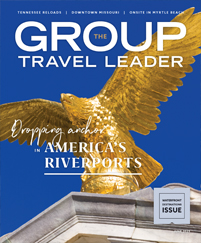
Knife River Indian Village
National Historic Site
In Stanton, N.D., Knife River Indian Village National Historic Site gives visitors another opportunity to learn about the native groups that have lived in the area for millennia.
“We have the archaeological remains of three earth lodge villages,” said Dorothy Cook, interpretive specialist at the site. “This site has been occupied for more than 11,000 years. The Hidatsa Indians lived here, and the Mandan people lived here, too.”
Today, depressions in the earth on the banks of the Knife River mark the spot where Hidatsa people lived in traditional earth lodges. Visitors can take a short walk down to the site to see the lodge depressions, and the visitors center features an orientation film on the Hidatsa and Mandan people and a number of historic artifacts.
In addition to the visitors center, the park has a re-created earth lodge, where educators tell groups about the daily life and customs of the area’s original inhabitants.
“When you go in there, you see how people cooked their meals in the pots at the central fire pit,” Cook said. You’ll “see where they slept and their everyday tools like the hoe, rake and digging stick.”
Akta Lakota Museum
In Chamberlain, a small town in south-central South Dakota, the St. Joseph Indian School educates American Indian students from around the region in both ancestral traditions and modern academic subjects.
One of its best teaching tools, the Akta Lakota Museum, also makes a great stop for groups that want to learn more about the Lakota people.
The museum exhibits detail important Lakota traditions such as the medicine wheel, as well as events that took place as the American government entered Sioux territory.
“We have a museum-sized medicine wheel hanging from the ceiling,” said museum director Dixie Thompson. “We also have a lot of information on traditional boundaries and how those boundaries changed when gold was found in the Black Hills.”
One exhibit about the importance of the buffalo has numerous items traditionally made from buffalo parts, including bladder bags, rawhide bowls and bone awls used in sewing. A section on childhood has toys, clothes, snowshoes and other items used by Lakota children.
One of the museum’s greatest strengths is its collection of art, which includes dozens of paintings and sculptures by contemporary American Indian artists depicting various themes relating to nature, history and Lakota cultural traditions.
A small fine-art gallery at the museum offers Indian art for sale.
This fall, the museum will begin an expansion project that will bring new exhibit space and a medicine wheel garden. The project is scheduled for completion in 2013.












